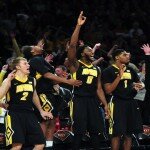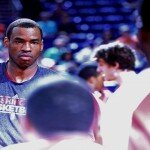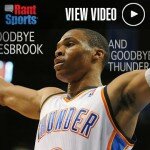The San Francisco 49ers entered the 2013 NFL Draft with one of the more complete rosters in the league. But that does not mean they were devoid of any weak areas. With 13 picks at their disposal, the 49ers navigated their way up and down the draft board, selecting the players they truly believed in. After examining the overall results, it’s a challenge to find any holes in their selections.
General manager Trent Baalke could have gone with either a tight end, defensive lineman or a safety in the first round. His staff ultimately made LSU safety Eric Reid the 18th-overall pick. Fans and analysts may question the pick, as there was a chance that he might have been available at the end of the first round. But Baalke did not want to take that gamble. By exchanging the 31st- and 74th-overall picks with the Dallas Cowboys, San Francisco moved up 13 spots, securing their coveted prospect in Reid.
Was the 21-year-old safety worth the trade? Only time will tell. While his coverage skills can use some polish, Reid’s physical mentality fits right in with the 49ers defense.
By swapping second-rounds picks with the Tennessee Titans, the 49ers acquired FSU defensive end Cornellius “Tank” Carradine. If it weren’t for a late-season ACL tear, Carradine would likely have been chosen in the first round. While he lacks experience, the former Seminole showcased his ability when he saw time on the field, notching 11 sacks in 11 starts as a senior.
The 49ers were not done bolstering its defensive line, as they chose Auburn’s Corey Lemonier (third round) and Alabama’s Quinton Dial (fifth round). Lemonier, who projects to play at outside linebacker with the 49ers, could give the defense a premier pass rusher opposite Aldon Smith. Dial on the other hand, brings versatility and excels as a run defender using his 6-5, 318-pound frame.
Offensively, Baalke strived to obtain more weapons for Colin Kaepernick. He did just that by selecting Rice tight end Vance McDonald in round two, and Louisiana Tech wideout Quinton Patton in round four.
Aside from McDonald’s in-line blocking, the versatile tight ends brings a lot of positives. Using his size and athleticism, he can become a matchup nightmare in the slot against slower linebackers and smaller defensive backs.
Patton was the focal point in Louisiana Tech’s high-flying offense. In two seasons, he accumulated 183 receptions for 2,594 yards and 24 touchdowns. With injuries surrounding Mario Manningham and Kyle Williams, Patton could play a role in Greg Roman’s offense rather quickly.
Perhaps the boldest pick made by San Francisco was the selection of South Carolina running back Marcus Lattimore (fourth round). Coming off a devastating knee injury, Lattimore might have to be “redshirted” his rookie year in the Bay. But given the depth the 49ers have at the position, this pick was low-risk, high-reward.
The 49ers completed its draft by adding FSU linebacker Nick Moody, South Florida quarterback B.J. Daniels, Iowa State offensive tackle Carter Bykowski and Rutgers cornerback Marcus Cooper.
An argument can be made that Baalke could have targeted a cornerback in the early rounds, but if the front-seven generates consistent pressure, the 49ers won’t need a shutdown corner. Instead, the secondary’s success will lean more on the play of Carradine, Lemonier, as well as the returning veteran pass rushers.
In conclusion, the front office aced this year’s draft not only because of the players they acquired (and wanted), but they also set themselves up for the 2014 draft. Next year, the Red and Gold is schedule to have 10 picks, including at least three third rounders.
Travis Chan is a San Francisco 49ers writer for www.RantSports.com. Follow him on Twitter or add him to your network on Google


















